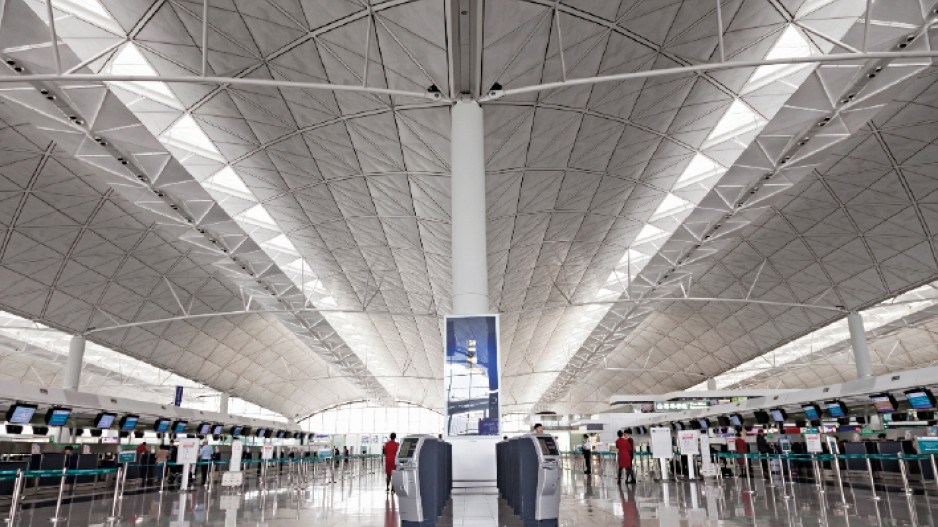One of the most effective and persistent pieces of sleight of hand in advertising is Hong Kong’s regular appearance at or near the top of the list of the world’s freest economies.
The reality is that Hong Kong has one of the world’s most stylized economies.
It is based on the government’s control of the supply of land for real estate development. For decades successive administrations have rationed the supply to maintain high prices and their own revenue from the sales.
On the buyers’ side, a handful of family-based real estate companies have come to dominate the business.
Companies like Cheung Kong Holdings, Sun Hung Kai Properties, Lee Shau-Kee and New World Development have their roots in real estate empires. But they have spawned vast business conglomerates that have latched onto every significant sector of the economy, stultifying the growth of small and medium-sized businesses and blocking the entry of major competitors.
As well as the oligarchs, foreign businesses using Hong Kong as a base for enterprises in China or other parts of Asia have done well out of the deal. The torrent of revenue that floods into government coffers each year from the administration’s haul on the deal allows taxation to be kept to a minimum.
That, coupled with a familiar administrative and judicial system inherited from 156 years of British colonial rule, has made and continues to make Hong Kong an attractive hub for business in east Asia.
However, the distortions and perversions in the Hong Kong economy are becoming increasingly debilitating and frustrating for the territory’s seven million people. Dissatisfaction with the structure of the economy, and the lack of accountability of officials and political leaders, has grown as the territory has become a middle-class society with middle-class expectations.
The level of dissatisfaction was neatly displayed in a poll after last month’s policy address by the government leader, Chief Executive Leung Chun-ying, in which he focused on economic matters. While a majority of respondents support government plans to help the poor, 70% said they don’t think Leung’s administration is doing enough for Hong Kong’s middle class.
Public unhappiness with the territory’s economic management comes as Hong Kong has been named the most expensive housing market in the world, and a confrontation is looming over China’s refusal to keep its promise to give the territory democratic institutions.
Yet the account sheet put out by Leung and the territory’s financial secretary, John Tsang Chun-wah, shows that Hong Kong’s reserves are HK$1.4 trillion, close to $2 billion, and the surplus is likely to be much more at the end of March, when the fiscal year ends.
Financial Secretary Tsang is due to present his budget for the coming year on February 26, and he is expected to warn that the government faces the risk of fiscal reserves drying up within 20 years because of the costs of providing social services to an increasingly demanding and aging population.
At the same time there are government proposals that capital revenue from land sales be earmarked exclusively for capital projects.
There is no doubt that the investment in capital projects by successive Hong Kong administrations over the last half-century has been a huge boon to the development of the territory.
But with this has grown up a mindset that public building projects are the most important work of government. It is only recently that government has been forced by public opinion to become the provider of more than minimal social services.
So, still on the Hong Kong administration’s agenda is a raft of infrastructure projects either of dubious usefulness or which could properly be undertaken by private enterprise.
These include a third runway at Chek Lap Kok Airport, a new road tunnel into the central business district, a high-speed rail link into central Kowloon and a road bridge across the Pearl River Delta to Macau and Zhuhai. •
Canada a key overseas connection for Hong Kong
There is always more guesswork than mathematics involved in estimating the Canadian population of Hong Kong.
Dual citizenship or residency status among hundreds of thousands of people means that any estimate of who is where, when and in what numbers is likely to be off by many tens of thousands, if not more.
But that only goes to reinforce the reality that in the last 30 years since Britain started negotiating with Beijing over the 1997 return of Hong Kong to Chinese sovereignty, Canada has become the territory’s most significant overseas relation.
Around 450,000 Hong Kongers emigrated to Canada in the decade or so before the return to Chinese rule and the years immediately after.
That relationship was well established at the time of the handover in 1997. I saw the Canadian government’s plans in the event of disaster after Beijing took control, such as the People’s Liberation Army being loosed on the then six million people in Hong Kong to knock out of their heads any thoughts of democracy or the continuing rule of law.
The Canadian disaster scenario plans estimated there were 500,000 people in Hong Kong – one in 12 of the population – who were either Canadian citizens or dependants. The plan envisaged deploying the Canadian Pacific Fleet and asking the United States and Australian navies to send all available warships to aid in the evacuation.
A 2009 study for the Asia-Pacific Foundation of Canada found that about 50% of the immigrants to Canada from Hong Kong left within 10 years, most of them returning to Hong Kong to work.
Based on that, the study estimated the Canadian population of Hong Kong to be about 150,000, but later studies by the foundation and others reckon the usual number to be around 300,000 or more.
Numbers breed institutions. The Canadian Chamber of Commerce in Hong Kong is the largest branch outside Canada, and there are in Hong Kong 24 alumni associations of Canadian universities and colleges.




